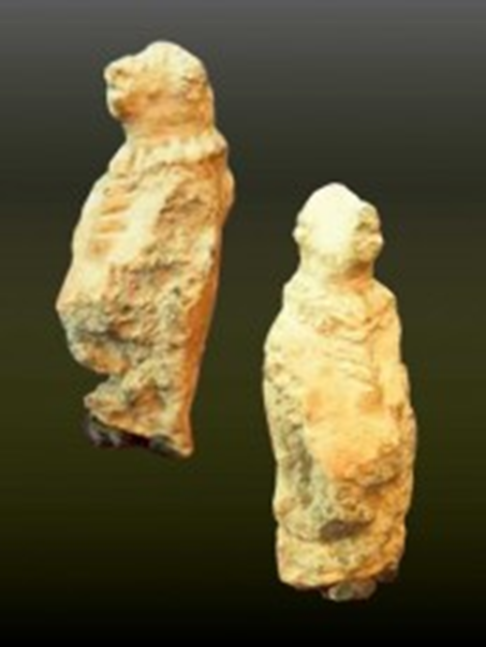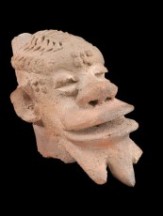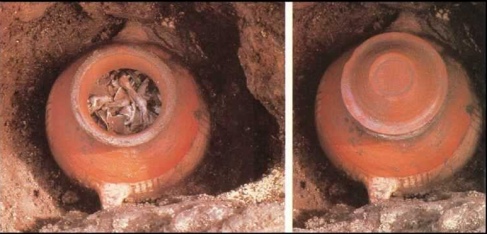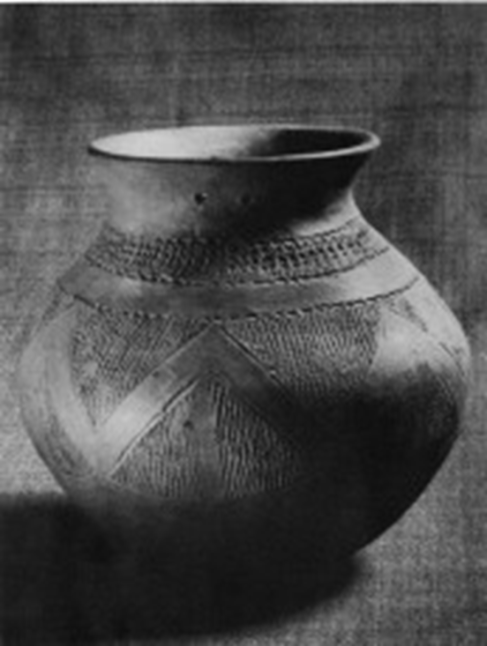The Sao Civilization of the lower valley of Logone and Chari now called Chad, corresponds to the upper palaeolithic period, [40,000-32,000 BCE] of Chadian history. Substantial evidence of zoomorphic, [animal shaped] works of art occur here, to represent what we call anthropomorphism , and see in Mesopotamia, Ancient Egypt, South-America and elsewhere, corresponding to the age when homo sapiens first climbed out of the Middle Palaeolithic to engage in recording through art, the animals that dwelt in their proximity, their understanding of their religion and possibly, also to trade. See also Garamantes.
Zoomorphic
Sao Anthropomorphic
NOTE: Unfortunately racism has played a significant part in robbing us of a comprehensive Sao history. It was important for Europeans to distort the history, in-order to allege that no African Civilization predated those of Europe. Fortunately, we can still put the pieces of the jigsaw they created, back together.
EARLY PREDYNASTIC: It appears fitting to me, to refer to the early epoc of the Sao, as Saoian. The Saoian culture appears in the Lower valley of Logone. Archaeological evidence discovered here, proves to be a settlement, where the Sao lived, and where they began to make pottery. 1.Over 15,000 pieces of ceramics have been discovered here; as well as funerary urns, water vases and other household utensils. It appears that the Soa’s period of residence in this land, was consistent right up to the bronze age and beyond, as bronze jewellery, coins and statutes were discovered along with ceramics and zoomorphic and anthropomorphic figures, which implies that the Sao did not migrate out of their region, as it is unlikely that such a chasm could exist between artists of the same epoch. I would also posit that they had a adequate natural water supply and a attachment to their Ancestors whom they buried carefully in large urns. [Depicted by the same Carthagian burial below]. I cannot say whether the carcases were burnt before being interred into the large funeral urns, but I will say that this tribe demonstrates a reluctance to commit loved ones to the earth to become food for maggots. Which would imply sensibilities and sensitivities, linked to some form of religious belief; for it is not too dissimilar to ancient Egypt’s embalming process, that favoured tombs as opposed to earth.
7th Century BC Burial Urn with charred remains of a child, [Carthage].
It is difficult to accurately record the Sao ceramics here, as Europeans stole the majority, which are now in private collections in European, and predominantly in France.
The jewellery of the Saoian epoc, consisted of large and small beads strung together, which we can conjecture, became more sophisticated as they evolved.
BRONZE AGE: The evidence for this is found in the cire perdu lost wax process, [ca.3000 BC] which the Sao used to make bronze jewellery cast according to the ancient abovementioned process. Also discovered were bronze ritual cups, pendants, ankle- bracelets and weapons, all now with Europes private collectors instead of in our museums. The weaponry informs us that the Sao hunted and were well aware of the need to defend themselves against aggression. There is also evidence that they were fishermen.
Ethnicity: We need to look at the ethnic groups inhabiting Lake Kuri, or Chad who may be related to the Sao and from whom we can glean the circumstances surrounding this tribes disappearance. 2 Jean Lebeuf documented several tribes: The Guti and Tukur tribes as having stylistic similarities in artwork, that permits us to conjecture a familial relationship. Lebeuf supported the hypothesis that the Buduma, Gamergu, Kanembu, Kotoko, and Musgum could claim descent from the Sao, however, I am not wholly convinced, that living in a particular region, automatically creates or confers ancestral descent, without other factors operating. Many African tribes were massacred with the arrival of Europeans. Entire tribes were deported into slavery, and this could account for the Sao disappearance. There is some suggestion that the Sao embraced Islam, but no proof is provided to support this supposition, nor would it cause the tribe to forget their origins.
As more information arrives I will update this history
REFERENCES:
1.Art and Mankind; Larousse Enc of Prehistoric and Ancient Art, [1962].
2.Lebeuf, Jean-Paul,and Annie Masson Detourbet (1950). La civilization du Tchad, Paris





You post very interesting posts here. Your website deserves much more traffic.
It can go viral if you give it initial boost, i know useful service that can help you,
simply search in google: svetsern traffic tips
Thank you Brad I appreciate your feedback.
Thank you, appreciate the positive feedback.
Thank you